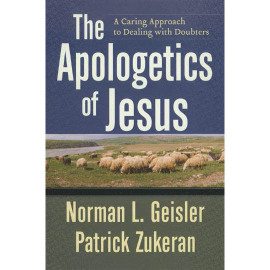Steve Cable looks at the current epidemic of cultural captivity as a repeat of the concerns introduced by the Apostle Paul in the second chapter of Colossians. When Christians give up their biblical worldview and take on the ideas of the culture around them it weakens their witness to a dying world. He offers practical ideas to combat the types of captivity identified: carnal, confused, compromised and contented.
A common theme of many science fiction tales is mass delusion. From The Matrix to The Truman Show, we find fictional characters who think they are making decisions on their own volition based on an accurate perception of their situation. In each of these cases, the people are actually experiencing a false reality manipulated by outside forces using them for their own purposes.
Sadly, many of us are unwittingly being manipulated by distorted perceptions of reality. And, just as in these fictional tales, these distortions are not an accident. They are promoted by the spiritual forces of darkness to keep us from being effective agents of light in this world.
As the Apostle Peter explained, to fulfill our purpose of proclaiming Christ in a world of darkness, we must
Keep (our) behavior excellent . . . so that in the thing in which they slander you as evildoers, they may because of your good deeds, as they observe them, glorify God in the day of visitation. (1 Pet. 2:12)
Distinctive thoughts produce distinctive behavior. Only by applying Christ to every aspect of life will we be able to “keep our behavior excellent” even as we are being slandered by the world. This is why Paul commands us:
See to it that no one takes you captive through philosophy and empty deception, according to the tradition of men, according to the elementary principles of the world, rather than according to Christ. (Col. 2:8-9)
Paul is not talking about physical bars or chains. He is warning us about invisible chains constraining our minds to think like the world. Whenever we assume that the perspective of the world overrides the truth of Christ in some aspect of life, we are allowing ourselves to be taken captive. Paul also says that “in Christ are hidden all the treasures of wisdom and knowledge” (Col. 2:3) Since that is true, we need to filter all truth claims through biblical revelation about the nature of God, man and the universe.
Let’s be honest. Most of us are oblivious to the invisible bars of cultural captivity. We think we are A-OK in balancing our spiritual beliefs with our everyday lives. However, most of us must be captive to some degree or the church would not be conforming to a degraded culture. As believers, we have the resources to escape from cultural captivity, but we need to make it a priority.
In this article we look at four types of captive believers: carnal, confused, compromised and contented.
As we consider these different manifestations of captivity, let’s ask God to make us aware of areas of captivity in our own lives.
Carnal Christians
Just as there are different types of prisons, there are different ways that captivity can affect the lives of believers. Carnal Christians are believers who have misplaced priorities. As citizens of heaven,{1} they are living as if they are citizens of earth. The apostle Paul introduces us to these believers in his first letter to the Corinthians:
And I, brethren, could not speak to you as to spiritual people but as to carnal, as to babes in Christ. . . .. For where there are envy, strife, and divisions among you, are you not carnal and behaving like mere men? (1 Cor 3:1-3 NKJV)
The word carnal comes from the Greek word that literally means fleshly. These are believers who are focused on serving their flesh rather than on using their flesh to serve God. The carnal Christian looks upon salvation as an opportunity to cater to the flesh while avoiding eternal consequences.
For example, carnal Christians view marriage as a means to meet their needs. As one young husband told his pastor, “God wants me to be happy. I am not happy in my marriage. So, God must want me to get a divorce.”{2} A 2008 survey found the divorce rate among “born again” Christians was the same as the rate among the population as a whole: about one in three (33%).{3} However, the rate of divorce among those who regularly attend church is much lower, about 1 in 4.{4,5} And my personal observation among actively growing Christians is a rate of less than 1 in 10.
Another area where carnality is evident is in business practices. We all drop our heads when we read about a “respected” church member who has been caught applying unethical and sometimes illegal business practices. It is highly likely that these individuals viewed the Scriptures as supporting their unethical attempts for temporal riches.
As Paul points out, minds that view the world through a fleshly perspective often lead to division and strife within the church. In fact, if the church is dominated by carnal Christians it may be worse than the world as “cheap grace” turns into license.
Let’s examine ourselves. Do we elevate the temporal above the eternal? What do our daily decisions reveal about our perspective? Is it carnal or spiritual?
A Christian struggling with a carnal perspective needs to start asking the question, “Which decision or course of action has the most positive benefits for eternity?” In Christ, we are no longer slaves to our flesh, so when we start turning control over to the Holy Spirit, the flesh cannot keep its control over us.
[For helpful articles on divorce: Probe’s Marriage and Family section
On business: Business and Ethics and Can the Just Succeed?]
Confused Christians
Confused Christians desire to please God, but they are confused about what God wants. Unlike the carnal Christian, confused Christians are concerned about the spiritual life. However, instead of being grounded in the Bible, they create their own spiritual truth from multiple sources.
Two thousand years ago, Paul warned believers that people will try to “delude you with persuasive arguments” (Col. 2:5) based on “the trickery of men, by craftiness and deceitful scheming” (Eph. 4:14). Today, believers are still bombarded with deceptive ideas designed to prevent them from living in a way that exalts Christ.
Recent surveys by the Barna Group show that this approach is prevalent among those between the ages of 18 and 25. According to their surveys, 78% of young adults identify themselves as Christians,{6} but more than half of them believe that the Qur’an and Book of Mormon offer the same spiritual truths as the Bible.{7} Is it any wonder that many sincere believers are confused?
Confused Christians are often influenced by those who offer to enhance their Christian experience with new insights. Recently, Oprah hosted a popular webinar with Eckhart Tolle. His repackaged Eastern mysticism is counter to the teachings of Christ on almost every topic. However, many of the participants were Christian women duped into believing that this false teaching was what Jesus was really trying to say all along.
One woman asked, “It’s really opened my eyes up to a new way of thinking; . . . that doesn’t always align with the teachings of Christianity. . . . Oprah, how have you reconciled these spiritual teachings with your Christian beliefs?”
In part, Oprah’s reply was “I took God out of the box. . . I’m a free-thinking Christian who believes in my way, but I don’t believe that it’s the only way, . . ..” In other words, “I am going to abandon the God of the Bible and create my own God who thinks like me.”
Confused Christians often misapply God’s character of love and compassion. We see this confusion in the debates on abortion, same sex marriage and homosexual clergy.
[For more information on these issues see these Probe articles:
Abortion
Arguments Against Abortion
The Dark Underside of Abortion
Same Sex Marriage: A Facade of Normalcy
Answering Arguments for Same Sex Marriage]
Once again, we need to examine ourselves. Am I confident that my beliefs are based on the principles revealed in the Bible? Am I confusing the wisdom of the world with the wisdom of Christ?
The primary prescription for a confused Christian is a steady dose of God’s word through personal study and trusted teachers who understand the Bible as the ultimate source of truth.
Compromised Christians
Compromised Christians profess a set of beliefs generally consistent with a biblical worldview, but compromise those beliefs by living like the world in one or more areas.
Jesus may have been referring to compromised Christians when He said,
And others are the ones on whom seed was sown among the thorns; these are the ones who have heard the word, but the worries of the world, and the deceitfulness of riches, and the desires for other things enter in and choke the word, and it becomes unfruitful. (Mark 4:18-19)
Knowing that they are called to a fruitful life, they allow the pressures and the temptations of the world to take precedence over the truth of Christ. They have allowed their concern for the things of the world to compromise their walk.
Some Christians are compromised by the desires of the flesh, addictions to alcohol, drugs or pornography. The high percentage of Christian men struggling with pornography is an example. Satan promotes the lie that this is a secret sin that can be kept from compromising one’s public witness for Christ. Yet, anytime we consistently make provision for the flesh, it is going to result in a compromised walk. I distinctly remember the day my friend and fellow church leader who had been struggling with pornography had to confess to his wife that he had committed adultery. Even with his sincere heart for restoration and reconciliation, the healing process was painful.
Other Christians are compromised by their pride or desire for earthly success. As Jesus warned the Jewish leaders,
How can you believe, when you receive glory from one another and you do not seek the glory that is from the one and only God? (John 5:44-45)
They rationalize unethical practices, questionable morals and exploitation of others as worth the price to achieve success. These Christians embrace the sacred/secular split described by Nancy Pearcey in her book Total Truth. They partition their lives and their minds so that biblical truth only applies to their spiritual, church life while pragmatism determines what is true for every other aspect.
Let’s examine our lives to see if we are rationalizing un-Christlike behavior to satisfy our own selfish desires. Are we choosing to conform to the world because we think we will enjoy that more than conforming to Christ?
If you are struggling with compromise, look for others who can help hold you accountable, mature believers who can join with us in allowing God’s Spirit to “destroy fortresses and every lofty thing raised up against the knowledge of God.”{8}
Contented Christians
Contented Christians are actively choosing the truth of Christ for their own lives, yet they are content to allow others to continue in cultural captivity. Either from fear of persecution or concern with hurting others or time pressures, these Christians avoid confronting others to unmask the deceptive, destructive ideas crippling their witness.
Although the apostle Paul was always content despite his physical circumstances,{9} he was never satisfied with the spiritual condition of the world. Paul said:
We proclaim Him, admonishing every man and teaching every man with all wisdom, so that we may present every man complete in Christ. For this purpose also I labor, striving according to His power, which mightily works within me. (Col. 1:28-29)
Mature Christians are called to impart their understanding to others, particularly carnal, confused and compromised Christians. The fact that we have not been doing so in recent decades can been seen in the diminished influence of the church on public life.
For example, over 87% of Congress members are affiliated with a Christian denomination. Yet, this Congress recently passed so-called “hate crimes” legislation which will limit the ability of Christians to speak biblical truth on sexuality. While abhorring any crimes, we realize that one of the most loving things we can do is to point out to others when they are engaged in destructive behavior. Yet contented Christians stood by as a nation with a Christian majority elected national leaders who seem to be carnal, confused and compromised.
As contented Christians, we have let family hour on television move from “Father Knows Best” to “The Secret Life of Teenagers” which feeds American youth a constant diet of promiscuity and disrespect for authority.
As contented Christians, we have let carnal, confused and compromised believers set the example for our younger generations. Is it any wonder that these generations are largely confused about their beliefs? Recent surveys indicate that although over one in three young adults can be identified as born again, less than one in a hundred has beliefs consistent with a biblical worldview.
So let’s examine ourselves. Do I sit on the sidelines watching other believers conforming to the world without attempting to intervene?
We are not spectators seeking to keep from getting stains on our white, linen knickers; instead, we are called to be warriors in the battle for the fate of our fellows. If we do not stand firm and confront error, we are just as much captives of our culture as the others.
Notes
1. Philippians 3:20
2. Al Janssen, The Marriage Masterpiece (Colorado Springs: Focus Publishing, 2001).
3. Barna Group, New Marriage and Divorce Statistics Released, March 31, 2008, www.barna.org/barna-update/article/15-familykids/42-new-marriage-and-divorce-statistics-released
4. Ibid.
5. Bradley Wright, Divorce Rates Among Christians by Church Attendance, December 4, 2006, brewright.blogspot.com/2006/12/divorce-rates-among-christians-by.html
6. Barna Group, Most Twentysomethings Put Christianity on the Shelf Following Spiritually Active Teen Years, www.barna.org/barna-update/article/16-teensnext-gen/147-most-twentysomethings-put-christianity-on-the-shelf-following-spiritually-active-teen-years
7. Barna Group, New Research Shows How Different Generations View and Use the Bible, October 19, 2009, www.barna.org/barna-update/article/12-faithspirituality/317-new-research-explores-how-different-generations-view-and-use-the-bible
8. 2 Corinthians 10:4
9. Philippians 4:11-13
© 2010 Probe Ministries


 It turns out that the group of pastors in Fort Portal was especially passionate about the apologetics material Pat and I covered during the six hours each day. They were experiencing a direct challenge from Islam and had little information with which to respond. Many of them felt the burden to defend their faith from the rising influx of money and mosques from Libya. Libya’s ruler Muammar Kaddafi has taken an interest in Uganda. In Fort Portal he has built a large, gold-domed mosque and a mansion for the local fifteen-year-old tribal king. Local Muslims have been targeting pastors and their sons by offering money and even cars to those who would convert to Islam. Sadly, some have done so.
It turns out that the group of pastors in Fort Portal was especially passionate about the apologetics material Pat and I covered during the six hours each day. They were experiencing a direct challenge from Islam and had little information with which to respond. Many of them felt the burden to defend their faith from the rising influx of money and mosques from Libya. Libya’s ruler Muammar Kaddafi has taken an interest in Uganda. In Fort Portal he has built a large, gold-domed mosque and a mansion for the local fifteen-year-old tribal king. Local Muslims have been targeting pastors and their sons by offering money and even cars to those who would convert to Islam. Sadly, some have done so. With that, they began celebrating by raising their new Bibles above their heads, dancing and singing a song titled, “Heaven and earth will pass away but God’s Word will endure forever.” It was a very moving for us to see the joy in their hearts because of our teaching.
With that, they began celebrating by raising their new Bibles above their heads, dancing and singing a song titled, “Heaven and earth will pass away but God’s Word will endure forever.” It was a very moving for us to see the joy in their hearts because of our teaching.